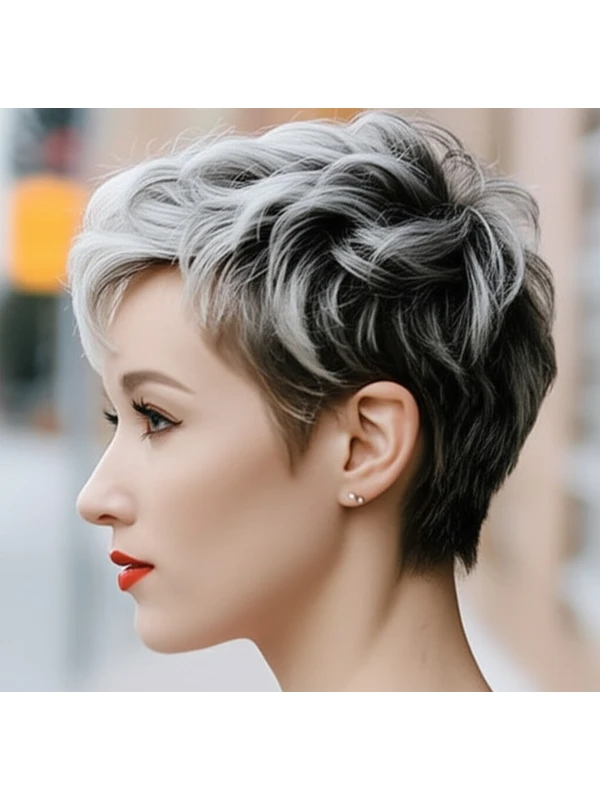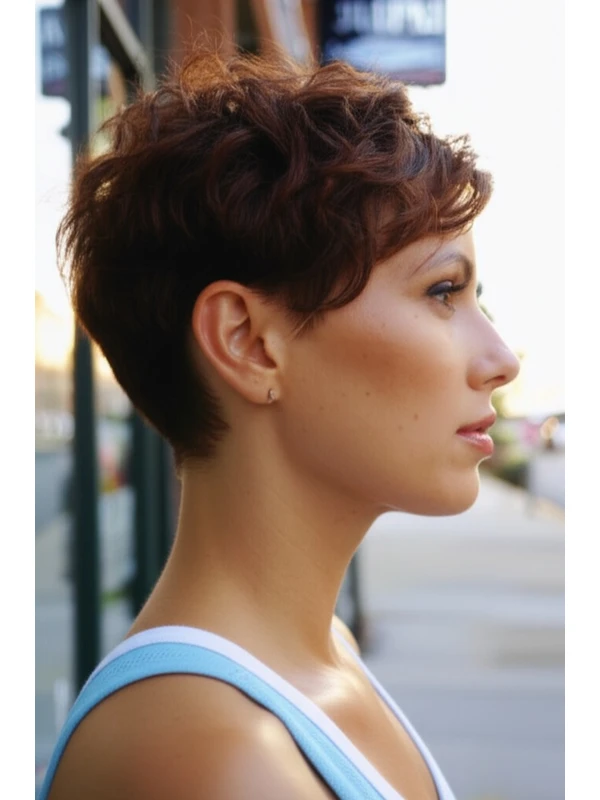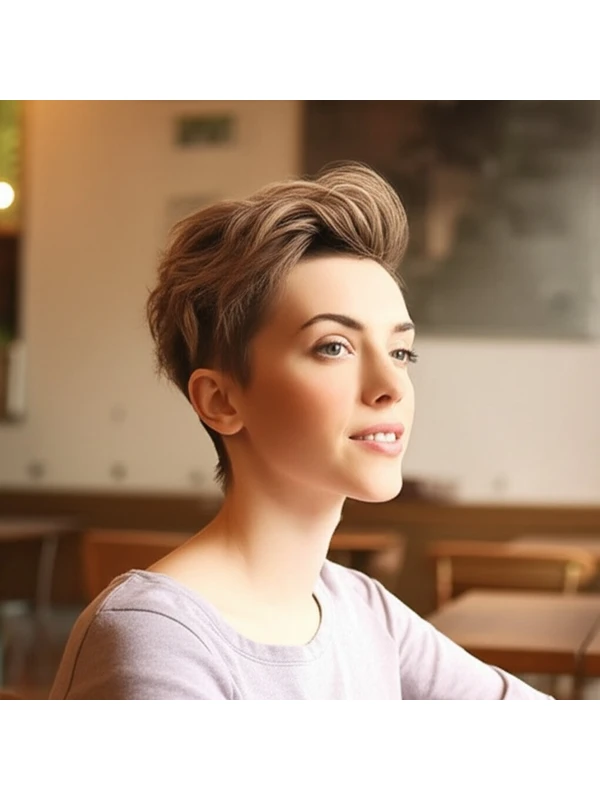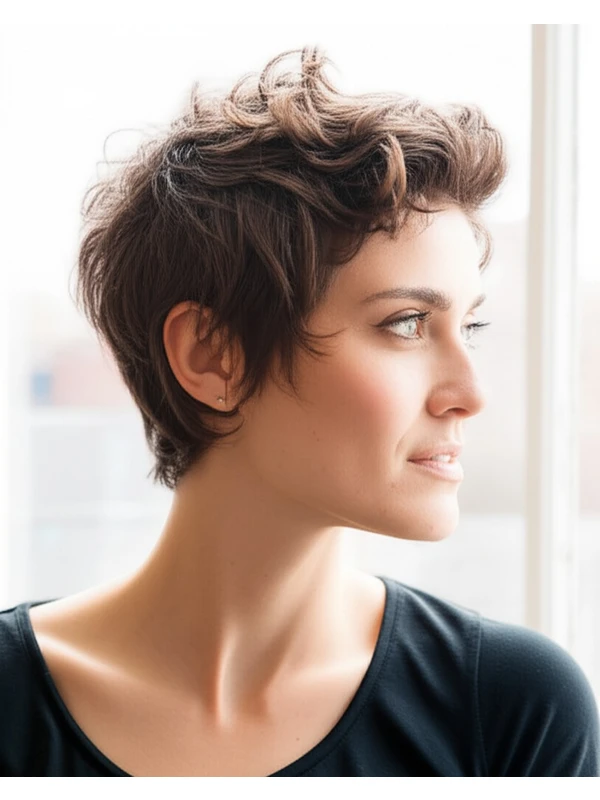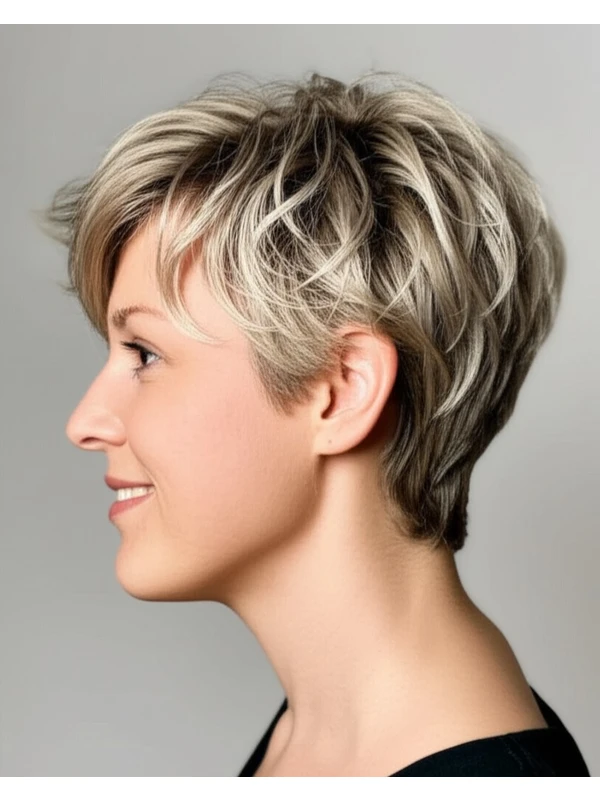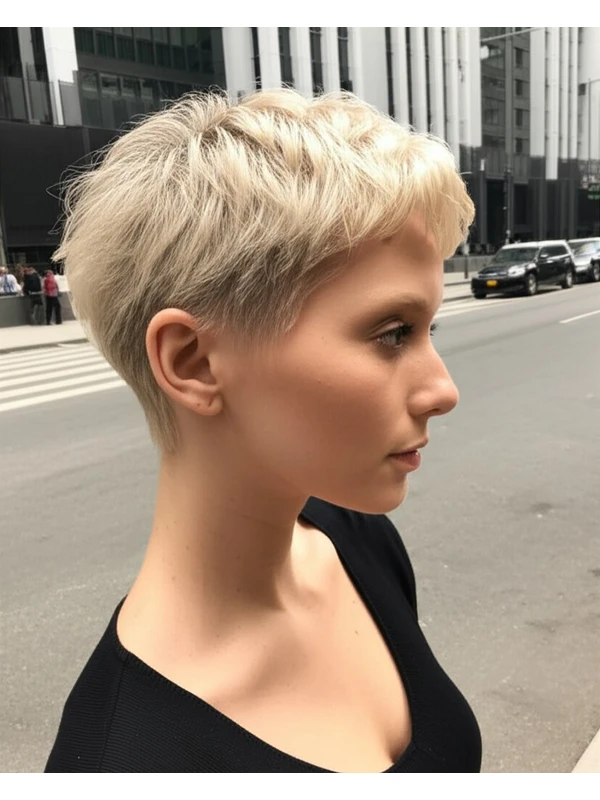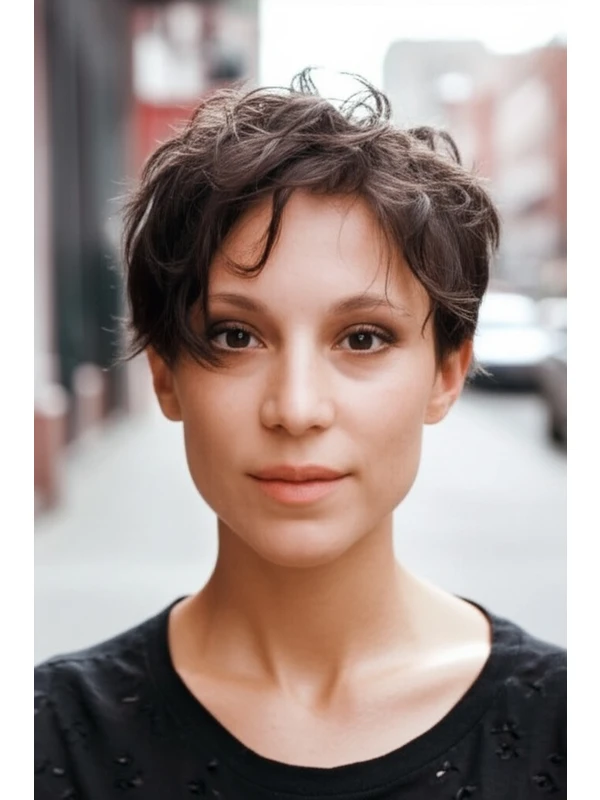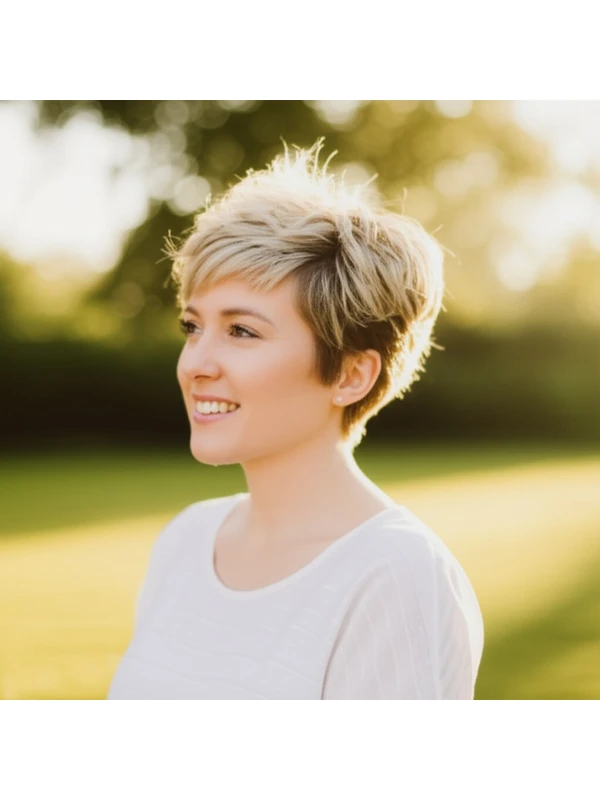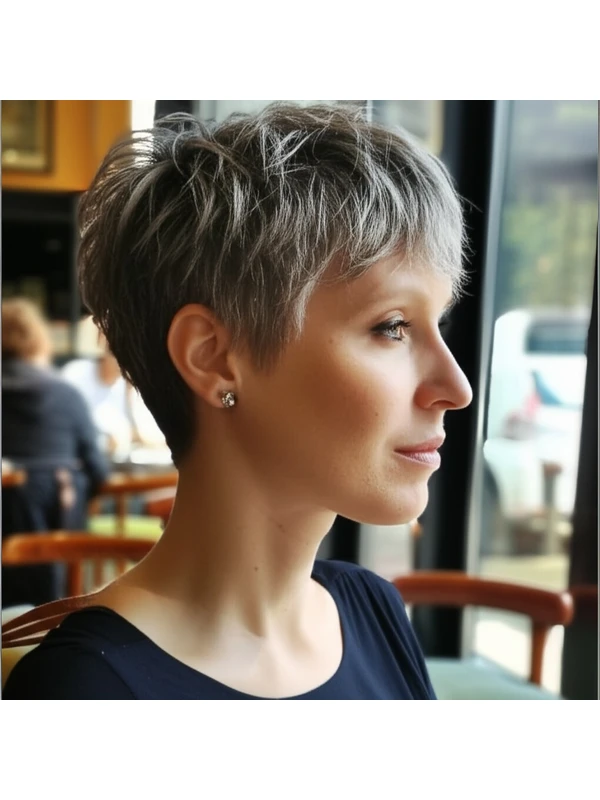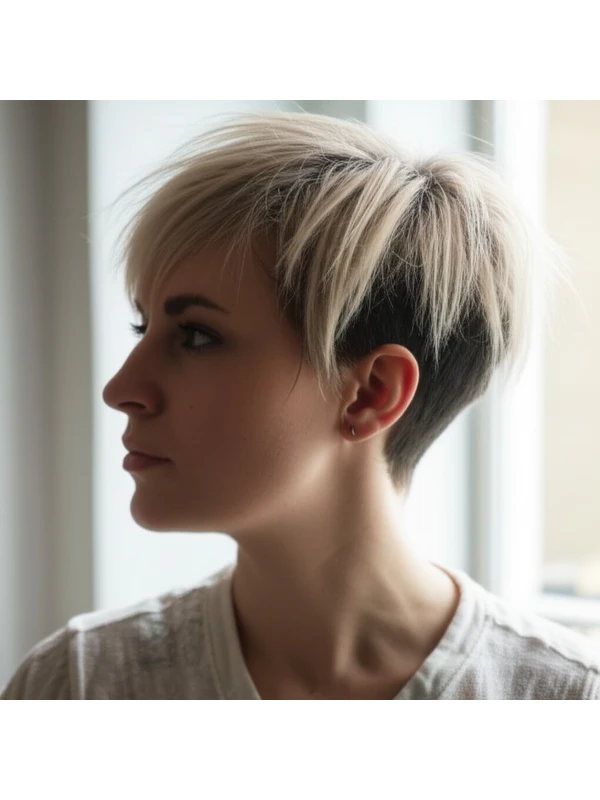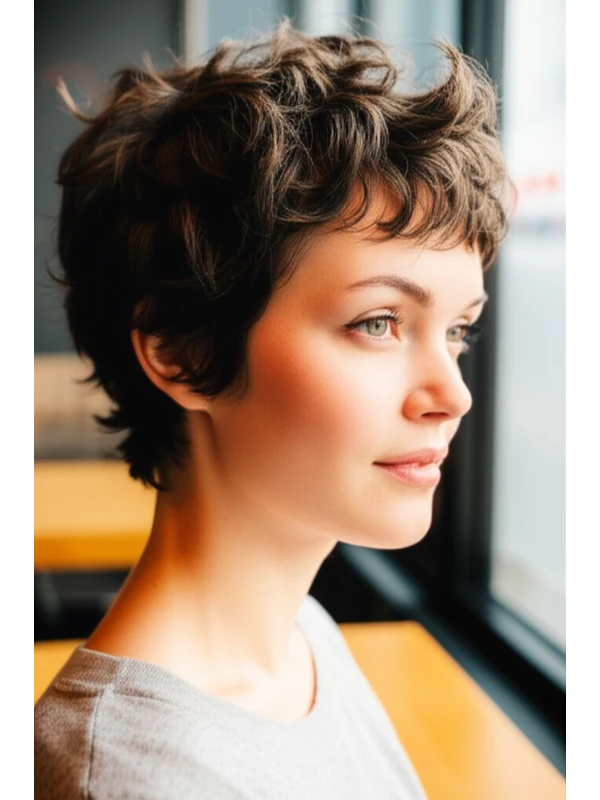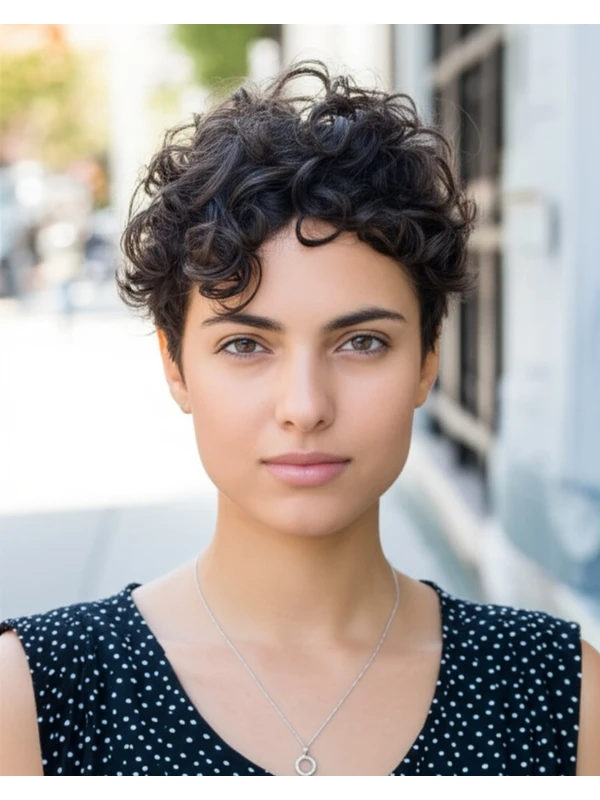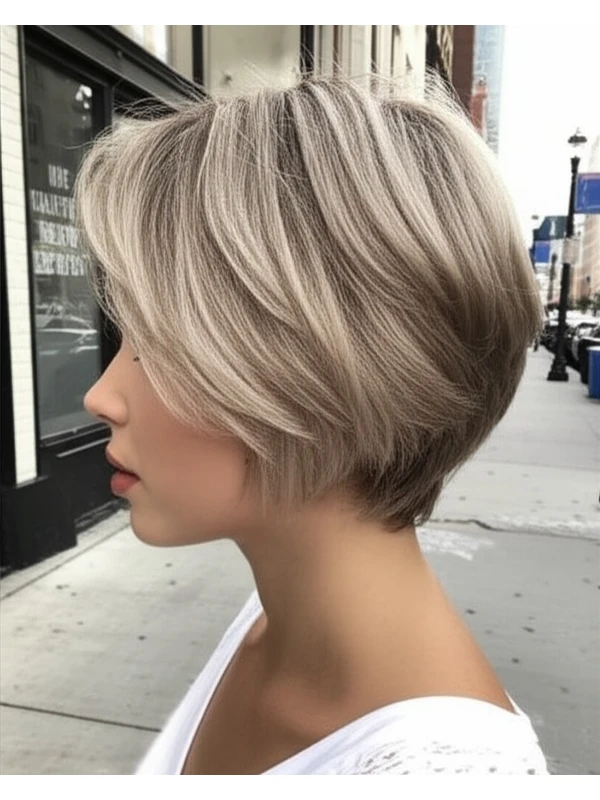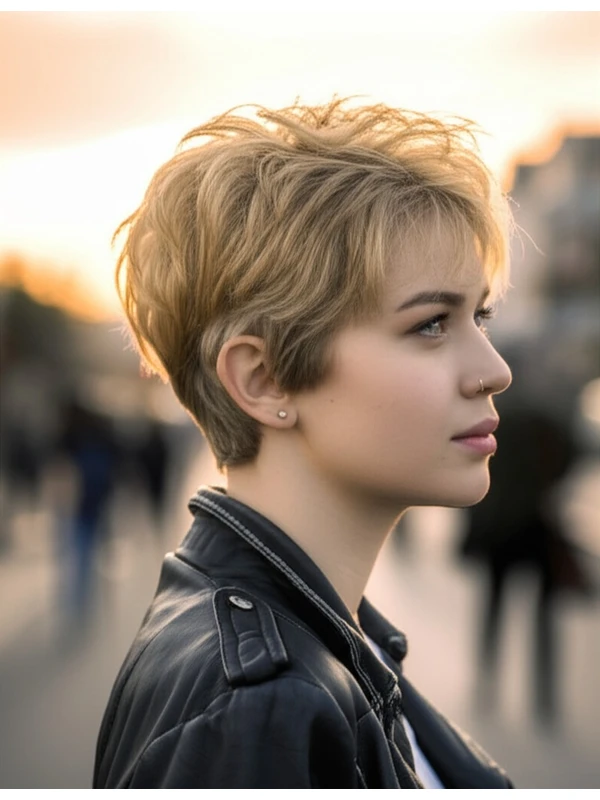#The Wavy Pixie: A Guide to Effortless Cool
The wavy pixie is a modern classic – playful, chic, and surprisingly versatile. This cut offers a refreshing alternative to longer styles while embracing natural texture. Here’s everything you need to know about rocking this look.
#1) Background & Definition: What Is a Wavy Pixie?
A wavy pixie isn't just short hair; it's an artful combination of shape and movement. Think of it as a shorter, more textured version of the bob. The cut is generally characterized by:
- Geometry: Layers are key! They create volume at the crown and frame the face with soft, wispy pieces. The back and sides are kept short (often above the ear), while the top maintains length for waves to fall into place.
- Key Features: Texture is paramount – a blunt, one-length cut won't achieve the desired effect. The style relies on embracing natural wave or creating soft bends with styling techniques.
- Length Ranges: Typically, the longest pieces at the crown reach around 3-5 inches (7.6–12.7 cm). Sides and back are significantly shorter, often grazing the ear or slightly below.
- Alternative Names: Textured pixie, layered pixie cut, wavy crop, modern pixie with layers.
#2) Face Shape Fit: Finding Your Ideal Angle
The beauty of a wavy pixie is its adaptability. However, certain face shapes benefit most from specific variations.
- Oval: Lucky you! Almost any variation of the wavy pixie will flatter an oval face. Play with fringe placement – side-swept or blunt bangs add extra personality.
- Round: Height and asymmetry are your friends. A slightly longer crown, angled layers, and a deep side part elongate the face. Avoid overly rounded shapes; opt for more vertical lines. Soft, wispy fringe can soften roundness but avoid thick, straight-across bangs which can accentuate width.
- Square: Similar to round faces, softening angles is key. Softer layers around the jawline and cheekbones create a gentler look. A side-swept fringe helps break up harsh lines. Avoid blunt cuts that emphasize angularity.
- Heart: Volume at the sides balances a wider forehead. A textured pixie with face-framing layers is ideal. Side-swept bangs can soften the pointed chin. Avoid too much volume on top, which can exaggerate the width of your forehead.
- Diamond: A wavy pixie highlights cheekbones and softens angles. A short fringe (either blunt or side-swept) helps balance a wider forehead and narrow chin. Layers around the jawline add softness.
- Oblong: Width is what you need to create! Shorter sides, more volume at the crown, and even a full fringe can make an oblong face appear broader. Avoid styles that pull hair straight up as this will elongate your face further.
#3) Body Proportions & Height Guidance: Tailoring the Cut
The wavy pixie isn’t just about your face; it interacts with your overall proportions.
- Petite: A shorter, more streamlined pixie keeps things balanced and prevents overwhelming a smaller frame.
- Average: You have the most flexibility! Experiment with different lengths and volumes.
- Tall: Longer layers on top add visual interest without making you appear too elongated.
- Narrow Shoulders: Volume at the crown creates the illusion of broader shoulders. Strategic layering can also help.
- Broad Shoulders: Keep the sides relatively close to your head to avoid adding extra width. Avoid excessive volume at the shoulder line.
- Short Neck: Avoid overly voluminous styles on top, as they can accentuate a short neck. Layers that fall softly around the face are more flattering.
- Long Neck: Embrace volume! A fuller pixie with layers adds visual balance and minimizes the appearance of length.
#4) Works Best With Hair Types & Densities: Texture Matters
This cut shines on various hair types, but understanding your texture is crucial for achieving the desired look.
- Straight Hair: Requires more styling to create waves. Use texturizing products and techniques (see Styling Variations).
- Wavy Hair: This is a dream pairing! The pixie enhances natural wave patterns.
- Curly/Coily Hair: Can work beautifully, but shrinkage needs careful consideration. Communicate your curl pattern to the stylist – layers are vital for defining curls and preventing a triangular shape after shrinkage. Expect significant length reduction (coils can shrink up to 75%).
- Fine Hair: Layers create volume and prevent flatness. A slightly shorter cut is often best, as long hair can weigh fine strands down.
- Medium Hair: The most versatile density – you have options!
- Thick Hair: Requires more strategic layering to remove weight and maintain shape.
#5) Styling Variations: From Sleek to Textured
This cut is a blank canvas for your styling creativity.
- Sleek vs. Textured: Use smoothing serums for a polished, sleek look or texturizing creams/sprays for an undone, tousled vibe.
- Middle vs. Side Part: A side part adds asymmetry and can soften features.
- Fringe Variations: Blunt bangs create a bold statement; wispy, layered fringe softens the face; side-swept bangs add movement.
- Occasion Styling:
- Casual: Air dry with sea salt spray for effortless texture.
- Office: Smooth and sleek with a minimal part.
- Evening: Add volume at the crown using mousse or root lifter, then finish with hairspray.
#6) Maintenance: Keeping Your Pixie Perfect
Regular trims are essential to maintain shape and prevent it from looking overgrown.
- Trim Cadence: Every 4-6 weeks is typical.
- At-Home Routine: Gentle cleansing, moisturizing conditioner, and a texturizing product (depending on your hair type).
- Heat vs. Air Dry: Air drying enhances natural texture. If using heat, apply a heat protectant!
- Product Checklist: Shampoo/Conditioner suitable for your hair type; leave-in conditioner (especially important for dry or curly hair); texturizing cream/spray (for waves and volume); finishing spray/hairspray.
- Estimated Daily Styling Time: 5–15 minutes, depending on desired style and hair texture.
#7) Grow-Out Roadmap: The Evolution of Your Pixie
The wavy pixie isn’t a static look; it evolves as your hair grows.
- Months 1-3: Shape is most defined. Regular trims are crucial to maintain the layered structure.
- Months 3-6: Hair starts to lengthen, potentially looking awkward if not trimmed. Communicate with your stylist about maintaining shape and adding more layers if needed. The fringe might need adjusting too.
- Maintaining Shape Between Cuts: Use dry shampoo at the roots for added volume. Experiment with different styling products to keep texture in check.
#8) Color Pairings: Enhancing Your Pixie's Dimension
Color can elevate a wavy pixie from cute to captivating.
- Cool Undertones (pink, blue): Icy blondes, ash browns, and even subtle lavender tones work beautifully.
- Warm Undertones (yellow, gold): Honey blondes, caramel highlights, and copper shades enhance warmth.
- Low-Commitment Options: Balayage or babylights add dimension without a harsh root line. Root shadowing can also create depth.
#9) Season & Occasion Guide: Styling for Every Moment
Adapt your styling based on the season and event.
- Spring/Summer: Embrace lighter, airier styles with minimal product.
- Fall/Winter: Add more volume and texture for a cozy, lived-in look.
- Work: Sleek and polished – focus on neatness.
- Weddings/Parties: Glam it up with added volume, shine, and playful accessories.
- Formal Events: A sophisticated side part and strategically placed waves create an elegant feel.
#10) Cost & Time: Salon Investment
The wavy pixie requires a skilled stylist to execute properly.
- Salon Time: Typically 45-90 minutes for the initial cut.
- Price Range: Expect to pay in the mid-to-high range, reflecting the expertise required. Subsequent trims will be shorter and less expensive.
#11) Pros & Cons: The Real Deal
Let's weigh the good with the not-so-good.
Pros:
- Chic and modern style
- Easy to manage (with proper styling)
- Versatile for various occasions
- Highlights facial features
Cons:
- Requires regular trims to maintain shape
- Can be high maintenance depending on hair type & desired style.
- Not as much length for those who like longer hair
#12) Salon Consultation Script: Your Checklist
Use these prompts when discussing your wavy pixie with your stylist:
- "I'm interested in a wavy pixie cut, but I’m concerned about [specific concern – e.g., my forehead width/neck length]."
- “Can you show me examples of the style on someone with my hair type and texture?”
- “How much volume should we create at the crown to balance my face shape?"
- "What styling products would you recommend for my hair type, and how do I use them?"
- "Could we discuss a grow-out plan so I know what to expect as my hair gets longer?”
#FAQs: Your Burning Questions Answered
- Can I get this cut if I don’t have natural waves? Yes! A stylist can create texture using styling techniques and products, but it will require more effort.
- Will a wavy pixie make my face look wider? It depends on the variation – strategic layering and asymmetry can actually slim down certain face shapes.
- How much shrinkage should I expect if I have curly or coily hair? Expect significant shrinkage, potentially up to 75%. Communicate this with your stylist!
- Is a fringe (bangs) necessary for this style? No, but it can enhance the overall look and frame your face.
- Can I still wear my favorite headbands/hair accessories? Absolutely! The pixie offers plenty of opportunities to accessorize.
- How do I prevent my wavy pixie from looking too "choppy"? Ensuring soft, blended layers is key. A skilled stylist will prioritize seamless transitions between lengths.
